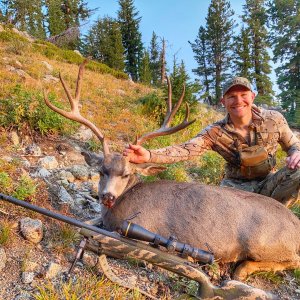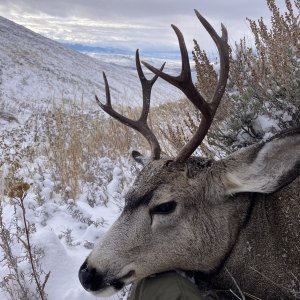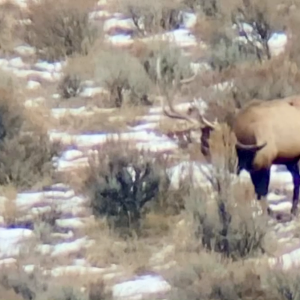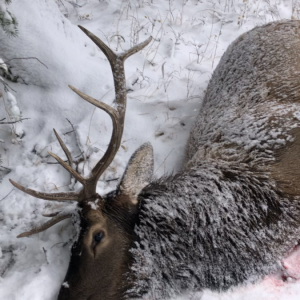cabinfever
Very Active Member
- Messages
- 2,382
I just returned from 17 days hunting sheep, moose and grizzly in Alaska. It was a hunt of a lifetime, but I will save that for a another post.Ruffing it for that long, really makes a guy think about his gear and particulary the clothes he hunts in every day. In my case it was the Sitka line of clothing. As a disclaimer, I should probably let you know that I'm tough on gear. What I mean is, I don't give second thought to my clothing when I'm putting a stalk on a deer through nasty oak brush, or bush whacking through willows to get a crack at a swamp donkey, or navigating across scree slides and glaciers to kill a sheep.
Sitka...good, bad, and the ugly.
I have owned and used Sitka since their humble beginings. I have worn my sitka in the high places of Colorado wilderness to the snowy peaks of the Alaska Range and many places in between. I feel like I have a very unbiased yet experienced opinion of the product. Here it is in raw form. Exempt from all sugar coating. The way it should be.
First off, I think Sitka is the best hunting clothing to come along since sliced bread. It breathes well, is light weight, and fits the way an expedition style garment should. The first thing you will notice when you try a sitka piece on is the fit. No unecessary material, accessories or bulk. Once you hunt in it you will notice that it breathes very well. Probably more so than any hunting clothing you have ever owned.
Having said that, I'm a little disappointed with Sitkas durability. Some of you may remember my post about shredding a pair of ascent pants while hunting some oak brush country. I replaced the ascent pants with a pair of mountain pants as they seemed a bit more heavy duty. These were new un-used pants before I left for AK. Two days into the trip the pants came unstitched in the crotch area. Let me make it clear. They did not tear, they came unstitched. Thats not a good thing when you have 14 days left on your hunt. I told my guide that I had sitka rain gear and he said bring it if you want but it aint water proof. I called BS on him and brought them anyway. Guess what? I got wet during our first rain storm. Thats not acceptable for a $300 rain jacket. I have no personal vendettas with Sitka and personally I'm not convinced (yet) that their is a better option. However I do believe their are options that are just as good for less money. I think they have some issues to iron out with their cut and sew shops. I believe that is were the problems are occuring. Not sure where to go from here. I may try KUIU. However, there are several sitka pieces that have not failed me and I will likely continue to use those.
Sitka...good, bad, and the ugly.
I have owned and used Sitka since their humble beginings. I have worn my sitka in the high places of Colorado wilderness to the snowy peaks of the Alaska Range and many places in between. I feel like I have a very unbiased yet experienced opinion of the product. Here it is in raw form. Exempt from all sugar coating. The way it should be.
First off, I think Sitka is the best hunting clothing to come along since sliced bread. It breathes well, is light weight, and fits the way an expedition style garment should. The first thing you will notice when you try a sitka piece on is the fit. No unecessary material, accessories or bulk. Once you hunt in it you will notice that it breathes very well. Probably more so than any hunting clothing you have ever owned.
Having said that, I'm a little disappointed with Sitkas durability. Some of you may remember my post about shredding a pair of ascent pants while hunting some oak brush country. I replaced the ascent pants with a pair of mountain pants as they seemed a bit more heavy duty. These were new un-used pants before I left for AK. Two days into the trip the pants came unstitched in the crotch area. Let me make it clear. They did not tear, they came unstitched. Thats not a good thing when you have 14 days left on your hunt. I told my guide that I had sitka rain gear and he said bring it if you want but it aint water proof. I called BS on him and brought them anyway. Guess what? I got wet during our first rain storm. Thats not acceptable for a $300 rain jacket. I have no personal vendettas with Sitka and personally I'm not convinced (yet) that their is a better option. However I do believe their are options that are just as good for less money. I think they have some issues to iron out with their cut and sew shops. I believe that is were the problems are occuring. Not sure where to go from here. I may try KUIU. However, there are several sitka pieces that have not failed me and I will likely continue to use those.












